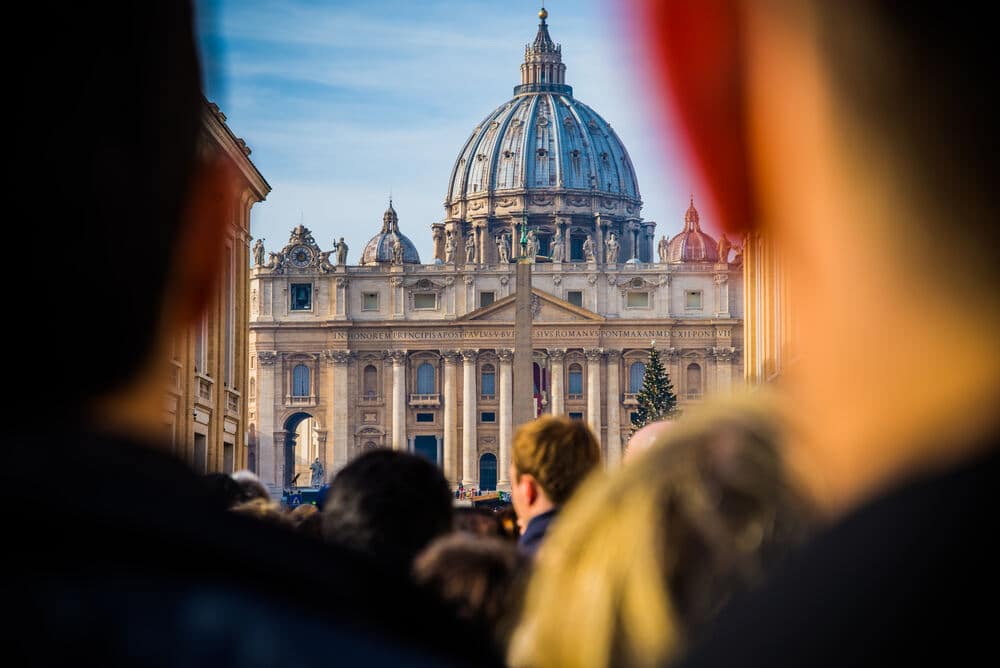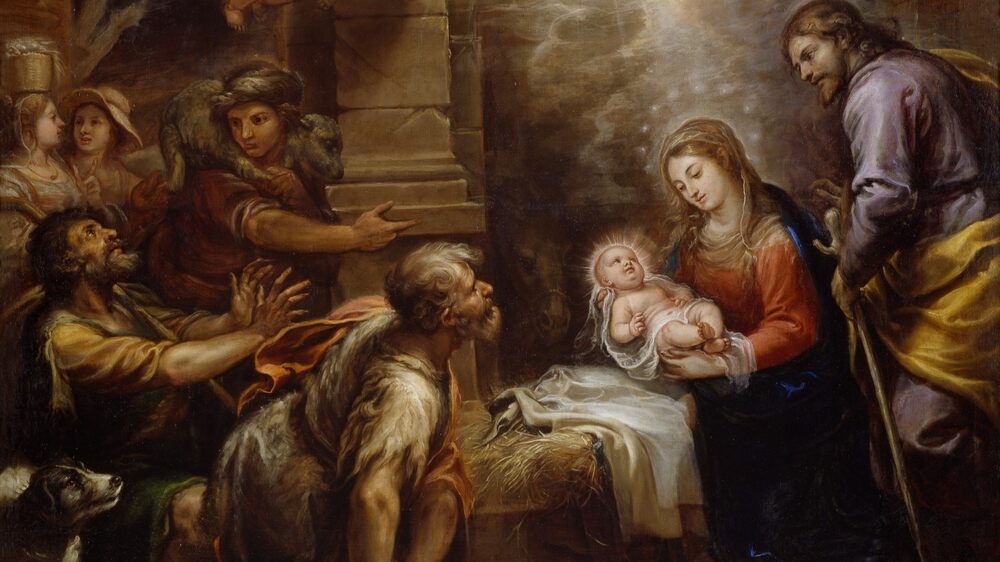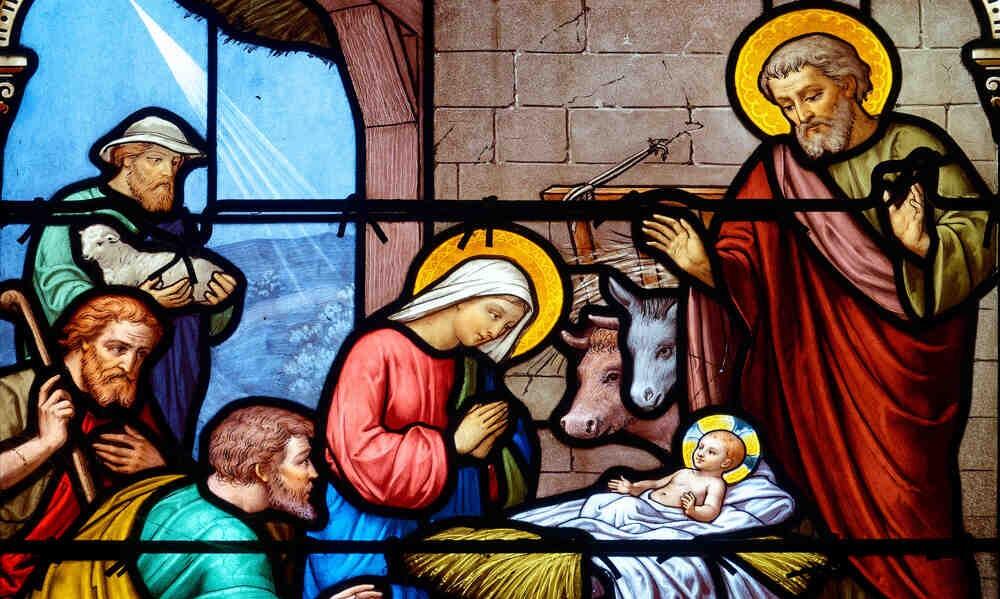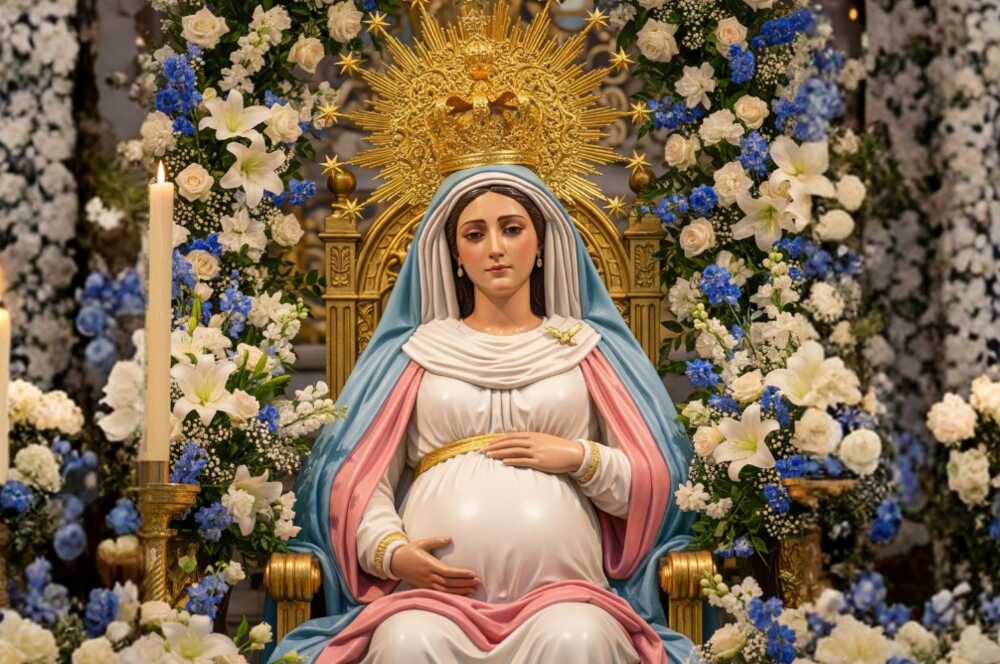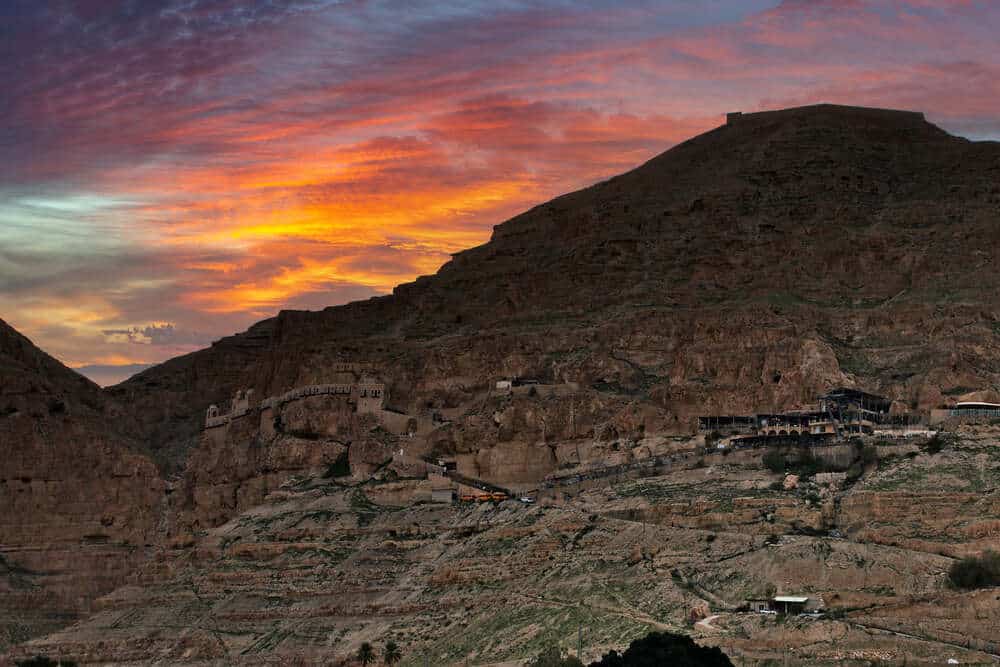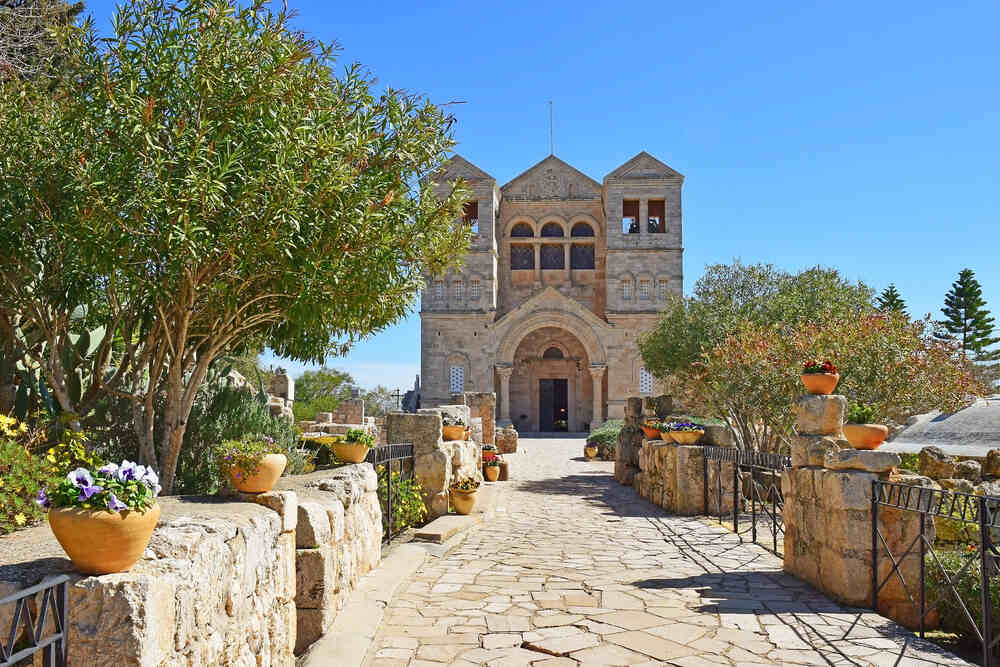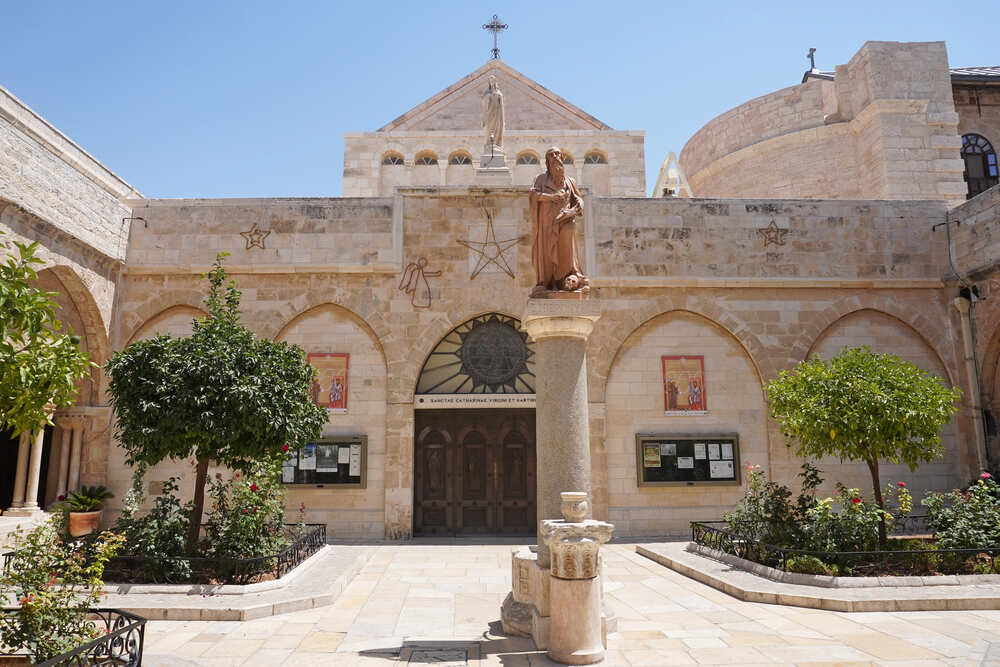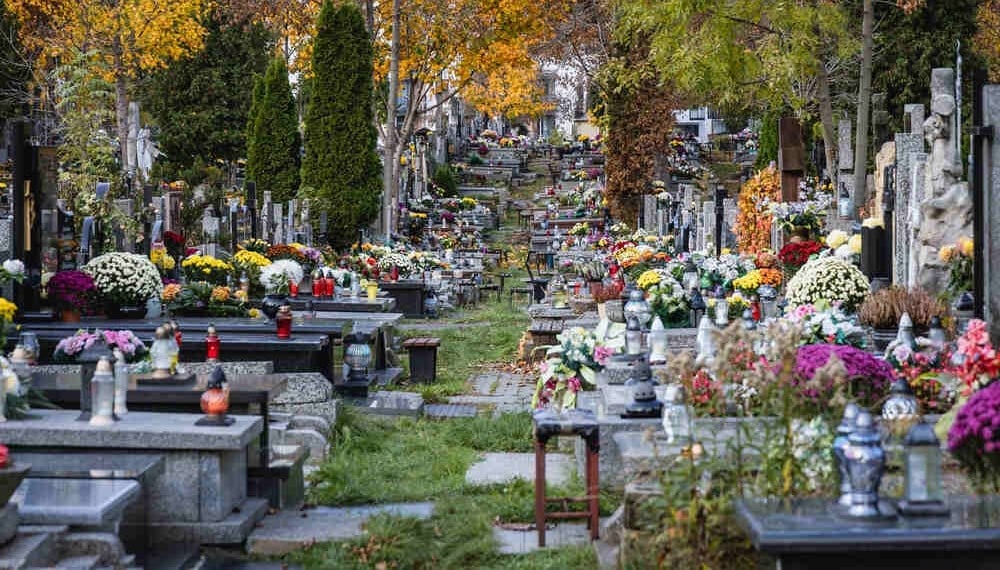The month of May, known as the month of Mary, is a time of special devotion in the Catholic Church. In many countries with Catholic traditions, the Virgin Mary is celebrated in a special way through a deeply rooted custom: the Pilgrimage (Romeria). This practice is one of the most beautiful and popular expressions of faith, love, and veneration towards the Mother of God.
You can use the Catholic Mass Times app to find the nearest Catholic church with Mass, Confession, and Adoration schedules. It will surely help you! Download it now.
What is a Pilgrimage?
A Pilgrimage (Romeria) is a journey made by Catholic faithful to a sanctuary, hermitage, or venerated image of the Virgin Mary or another saint. The word “pilgrimage” derives from “pilgrim,” a term that originally referred to those who traveled to Rome. Over time, the word acquired a broader meaning and came to designate any devotional journey.
Pilgrimages combine religious fervor with a sense of community and celebration. Pilgrims travel long distances, many of them on foot, praying, singing, and carrying floral offerings. Upon reaching the sacred place, Holy Mass is celebrated, the Rosary is prayed, and homage is paid to the Virgin Mary.
The May Pilgrimages
In the Northern Hemisphere, May is considered the month of flowers and the month of Mary, making it the ideal time to pay homage to the Virgin. The Pilgrimage (Romeria) in May takes on a special meaning because it symbolizes new life, hope, and renewal of faith. During this month, Catholic communities organize visits to local or regional Marian shrines.
Many of these pilgrimages are experienced as true celebrations of faith: they begin very early in the morning, with songs and prayers, and pilgrims travel kilometers to reach the sanctuary. Once there, the Eucharist is celebrated, flowers are offered, and the Rosary is prayed as a community.
For many faithful, this pilgrimage is a tangible way to thank Mary for her intercession and to ask for special favors for family and community. At this time, the pilgrimages take on a special meaning. The symbolism is clear: flowers, spring, and new life reflect Mary’s purity, beauty, and spiritual motherhood.
In the month of May, pilgrimages aim to honor the Virgin and ask for her intercession. It’s an opportunity to renew faith, give thanks, and ask for special favors. Many families and communities organize these pilgrimages as an act of love and commitment to the Virgin Mary.
How to Pray a Pilgrimage
Making a pilgrimage not only involves walking to a Marian shrine, but also experiencing a true act of prayer and spiritual encounter. Along the way, pilgrims often pray the Rosary as a community, meditating on the mysteries of the lives of Jesus and Mary. It is also a tradition to chant litanies in honor of the Virgin, such as the Litany of Loreto, which invoke the titles and virtues of Our Lady.
Many pilgrims follow a beautiful custom, just like Saint Josemaría Escrivá: praying one part of the Rosary on the way there (for example, the Joyful Mysteries), another upon arriving at the sanctuary (for example, the Sorrowful Mysteries, plus the litanies) and a third part on the way back (for example, the Glorious Mysteries), thus offering the entire day to Mary. This simple practice, lived with filial love, helps to focus the pilgrimage as a true act of faith and encounter with God.
-
- You may be interested in: How to Pray the Rosary: Step-by-Step Guide
In addition to the Rosary and litanies, many communities pray novenas or sing traditional Marian hymns, strengthening the faith and unity of the group. It is also recommended to offer personal and community intentions during the walk, turning each step into a plea for love, forgiveness, and hope.
Upon arriving at the shrine, the celebration culminates with participation in the Holy Mass, considered the center and summit of every pilgrimage.
Origin and History of Pilgrimages
The tradition of pilgrimages dates back to the Middle Ages, when the faithful undertook long journeys to holy places such as Rome, Santiago de Compostela, or the Holy Land, seeking penance, healing, or indulgences.
Over time, these pilgrimages adapted to local shrines, becoming an expression of popular devotion. In many cultures, May became the ideal month for faith walks, as nature blooms and the spirit of renewal accompanies the celebration of Mary’s spiritual motherhood.
Pilgrimages have not only religious roots but also cultural ones, as many regions have preserved traditions, clothing, music, and typical foods that are integrated into the Marian celebration.
Traditions and Customs of Pilgrimages
Although the tradition of pilgrimages originated in Europe, especially in the Northern Hemisphere, it has spread and taken deep root in many Latin American countries. In these Southern Hemisphere countries, where May corresponds to autumn, Catholic communities equally celebrate the month of Mary following the universal liturgical calendar of the Church.
Thus, devotion and pilgrimages in honor of the Virgin Mary maintain their spiritual strength beyond the seasons of the year. In Argentina, Chile, Peru, and other countries, the faithful participate in local pilgrimages to pray, give thanks, and ask for the Virgin’s intercession.
The pilgrimages are celebrated in many different ways depending on the regions and countries. Some of the best-known include:
-
Spain: The Rocío Pilgrimage in Andalusia is one of the most famous in the world. Multitudes arrive in decorated wagons and traditional dress to the village of El Rocío to venerate the Virgin.
-
Mexico: Pilgrimages to the Basilica of Guadalupe, especially on December 12, although in May there are also visits and Marian offerings made at local shrines.
-
Latin America: In many countries, walks, processions, and community prayers are held to honor local images of the Virgin.
During the pilgrimages, novenas are prayed, traditional songs are sung, banners are carried, and acts of charity and solidarity are performed. Pilgrims often wear typical clothing from their region, carry Marian images or banners, and bring floral offerings. In some cases, such as in the Rocío Pilgrimage, pilgrims travel in ox-drawn carts decorated with flowers and flags. Food is shared, prayer vigils are held, and there is active participation in the Eucharistic celebration as the culmination of the journey.
Additionally, pilgrimages are a space for family and community gathering, where several generations come together to transmit faith and Marian devotion to the youngest. Traditional songs are sung, banners are carried, and acts of charity and solidarity are performed.
The Spiritual Value of the Pilgrimage
The pilgrimage is much more than a social event. It has a profound spiritual meaning. It is also an opportunity to walk towards Mary to get closer to Jesus. The effort of the journey and shared prayer are a beautiful expression of love and faith that fills our Christian walk with meaning. It is also an act of penance, offering, and thanksgiving.
Many faithful experience the pilgrimage as an experience of inner renewal, reconciliation with God, and fraternal encounter with the community of believers. Community prayer and mutual support reinforce the sense of belonging to the Body of Christ.
Conclusion
The Pilgrimage in the month of May is one of the most beautiful expressions of love for Mary. It reminds us that we are a people on a journey, pilgrims towards the heavenly homeland, always accompanied by the tenderness and maternal care of Our Lady, who walks with us and guides us towards her Son. Participating in a pilgrimage is an act of faith, hope, and devotion.
If you can, this month of May, participate in a pilgrimage and experience this tradition so cherished by generations of Catholics up close. Whether it’s a long pilgrimage or a simple visit to a local shrine, you’ll discover the deep joy that springs from walking alongside others, praying together, and offering your intentions and actions to the Virgin Mary.
If you want to organize a visit to a church or Marian shrine, or simply check Mass times along the way, use the Mass Times app to find the schedule of a nearby Catholic church and attend today! Download it now.
What is a pilgrimage?
A pilgrimage is a journey of the faithful to a sanctuary, hermitage, or sacred place to pay homage to the Virgin Mary or a saint. Pilgrims walk, pray, sing, and upon arrival, celebrate Holy Mass, pray the Rosary, and bring floral offerings.
Why are pilgrimages celebrated in May?
May is the month of Mary in the Catholic Church and is associated with purity, new life, and the spiritual motherhood of the Virgin. Therefore, pilgrimages are organized during this month to express love, gratitude, and commitment to Our Lady.
How is a pilgrimage celebrated?
Pilgrimages usually begin with songs and prayers at dawn. Pilgrims travel distances on foot or in carts, praying and carrying offerings. Upon reaching the shrine, they participate in the Eucharist, pray the Rosary, and share communal moments of faith and fraternity.
Are pilgrimages celebrated in Latin America?
Yes. Although the tradition originated in Europe, pilgrimages have spread widely in Latin America. Even in countries of the southern hemisphere, where May corresponds to autumn, communities celebrate pilgrimages following the universal liturgical calendar.
What is the purpose of making a pilgrimage?
More than a social act, the pilgrimage is a spiritual expression. It represents a journey towards Mary to get closer to Jesus, offering effort as a sign of faith, penance, and gratitude. It is also an opportunity for community gathering and transmission of faith.

